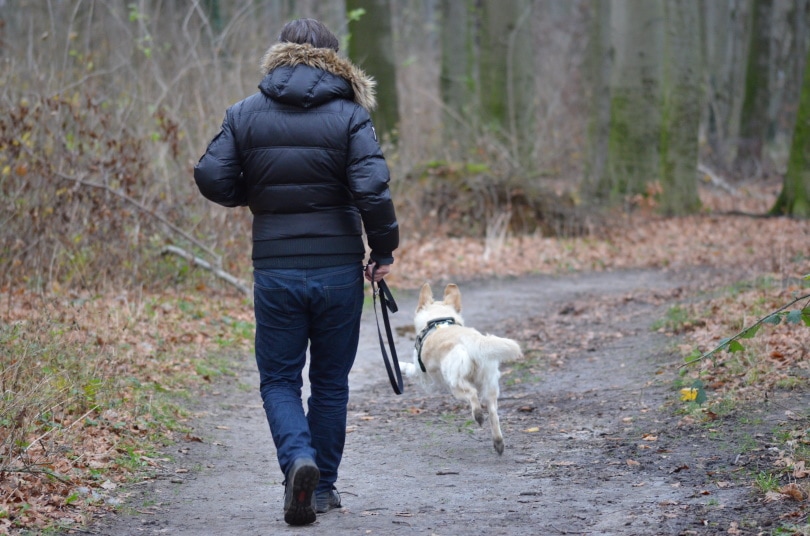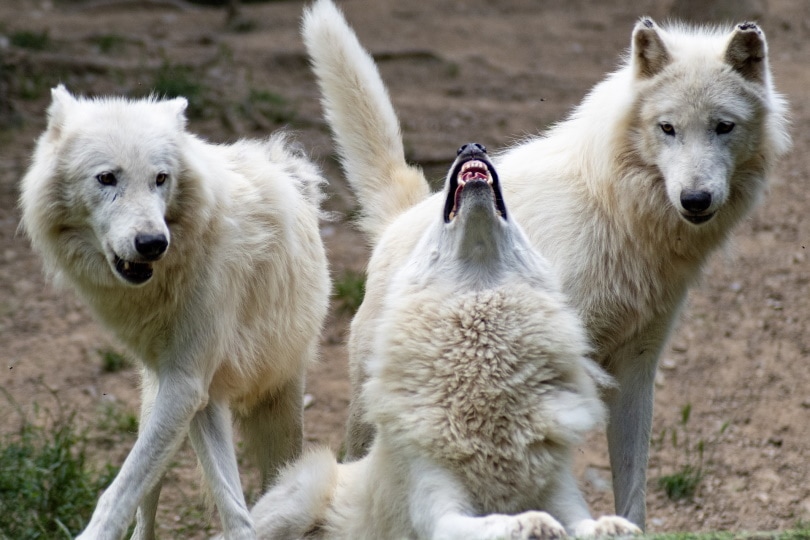How Do Search and Rescue Dogs Find Survivors? Types of Training

Updated on
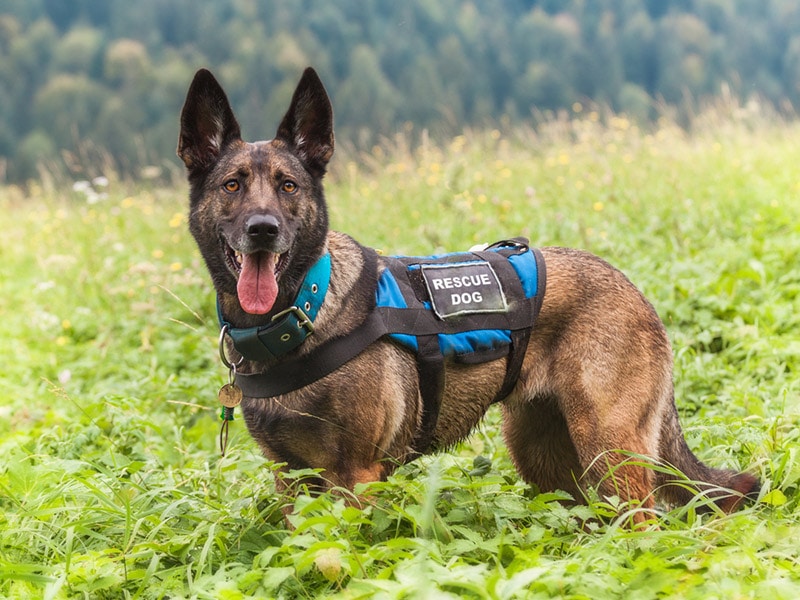
Click to Skip Ahead
Dogs are quite remarkable creatures; if they’re not showering us with unconditional love and affection, they’re on the frontline of rescue missions rescuing survivors. Search and rescue (SAR) dogs have been a staple for search and rescue missions since the 1700s.1 These dogs help track people lost in the wilderness or after a natural disaster.
Search and rescue dogs utilize their enhanced sense of smell and extensive SAR training to sniff out survivors in rescue operations. Moreover, the part of dogs’ brains dedicated to recognizing and analyzing scents is 40 times that of humans. They’re also faster and cover more ground than humans.
SAR dogs have amazing capabilities, but how do these canines find survivors? Keep reading to find out everything about these dogs and how they save lives.
What Is a Search and Rescue Dog?
A search and rescue dog is a specially trained canine that seeks out and finds people lost at sea, in the wild, in snow, or in the rubble following a natural or human-caused disaster. These canines are commonplace in search and rescue missions following earthquakes, collapsed buildings, avalanches, and search and rescue sea operations. People in the military also use them in war zones to find war victims in battle wrecks.
Not all dog breeds are suitable for search and rescue operations. Only a small percentage can handle the grueling environments, fast pace, and intensity of SAR emergencies. Breeds that are great for SAR operations include Bloodhounds. German Shepherds, Border Collies, and Golden Retrievers.
These breeds have the energy, intelligence, trainability, and fearlessness for such operations. The dogs must be strong enough to navigate treacherous terrains. They also must possess enough intelligence to learn and remember their training. Breeds like German Shepherds have the advantage of having a double-layered coat that protects them against harsh weather.
Hunting dog breeds are also good at SAR work since their natural hunting instincts kick in to help locate survivors. Bloodhounds, for instance, have large ears that can pick up the sound of slight movements. They also have facial folds that direct scent to their nostrils to better catch a whiff of survivors. Some dog owners or organizations breed dogs specifically for SAR operations.
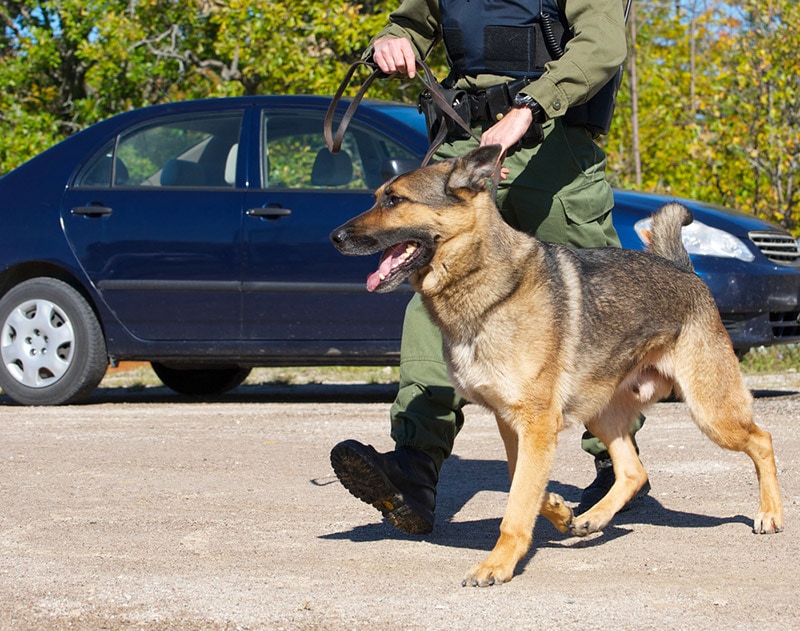
How Do SAR Dogs Find Survivors?
Despite daily showers, humans are inherently smelly creatures, especially to dogs. Humans shed their skin every two to four weeks to remove dead skin cells known as rafts. These rafts contain bacteria that produce a smell specific to humans. While cologne can mask this smell, no cologne is strong enough to mask it against the powerful, hypersensitive noses of canines.
SAR dogs sniff out raft scents specific to humans during rescue operations. While human cells smell differently, from one person to the next, they all have a general smell that forms a scent cone. Dogs follow this scent cone to get to the survivors.
The 6 Types of SAR Dogs
Search and rescue dogs are differentiated by what they do during search-and-rescue operations. There are six main types of search and rescue dogs.
1. Air-Scent Dogs

Air-scent dogs, as the name implies, use air-scenting techniques to sniff out survivors or human bodies. They use their powerful smelling capability to pick out the “hot” scent of survivors in the wind. Air-scent dogs are the main types of SAR dogs used for all kinds of operations, including underwater SAR missions.
Using these dogs allows faster ground coverage, dramatically improving the chances of isolating survivors following a disaster. These canines catch a whiff of the survivor’s scent, alert their handlers, and lead them to the survivor. Some air-scent dogs have training that allows them to discern different human scents to search for specific missing or wanted persons.
The biggest advantage of air-scent dogs is that they don’t need a “last seen” location to begin their search. This describes a location where the victim or survivor was last spotted by witnesses or rescue personnel. Instead, these canines simply arrive at the scene and sniff out survivors.
2. Trailing or Tracking Dogs
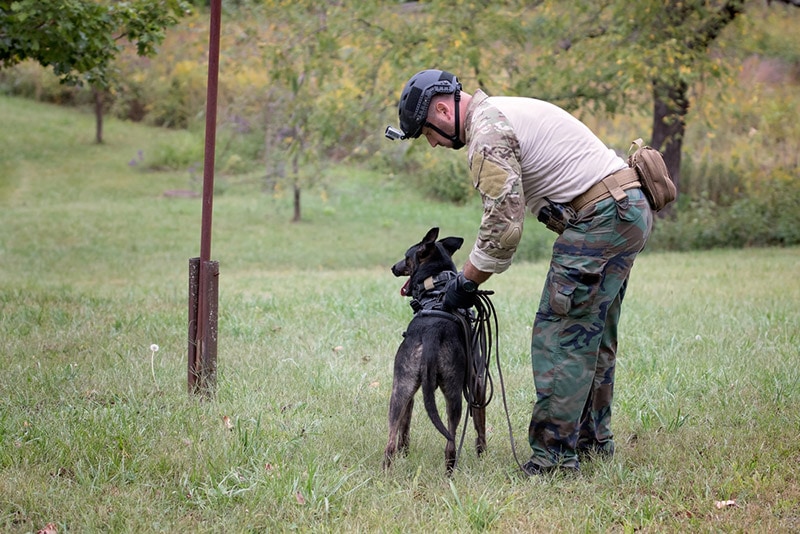
These SAR dogs receive training to follow a specific human scent. This training is centered on differentiating scents and trailing a single one. This scent trail is typically an approximation of the path the missing person used since factors like wind and temperature dispersal may scatter the scent all over.
These canines follow the scent deposit the missing person leaves behind while moving. They can pick up the scent of someone who passed a point several days earlier and also differentiate scents, even if masked by strong-scented perfume. The scent that gets blown out of the vehicles through the windows means tracking dogs can also trail people moving in vehicles.
Trailing or tracking dogs require a “Place Last Seen” (PLS) starting point to begin their search. After sniffing a sample scent, the dogs will put their noses to the ground and track it. They must act fast before the scent trail gets contaminated.
3. Disaster Dogs

Disaster dogs are air-scent dogs that find survivors after natural and human-caused disasters. Unlike ordinary air-scent dogs, these pups have special training to work efficiently in disaster situations.
These canines are used in disasters like mudslides, avalanches, building collapses, and earthquakes. Training for disaster dogs takes considerable time since the dog must completely understand direction control. The trainer must also undergo extra training to identify unstable surfaces that are likely to collapse.
This training also covers navigating dangerous scenarios and administering primary first-aid care. All canines and handlers must undergo comprehensive training to receive national certification in urban search and rescue. This certificate must be renewed every three years.
4. Cadaver/Human Remains Detection (HRD) Dogs

In cases where victims lose their lives, SAR teams use cadavers or human remains detection dogs to sniff out their bodies. Law enforcement also uses these dogs to find victims in crime scenes.
They can find decomposing and submerged bodies or body fragments like hair, blood, or skeletal remains. Cadaver dogs pick up the scent of decomposing tissue or dead cells (rafts). They have limited use in calamities but are incredibly useful for crime scenes.
5. Water Dogs
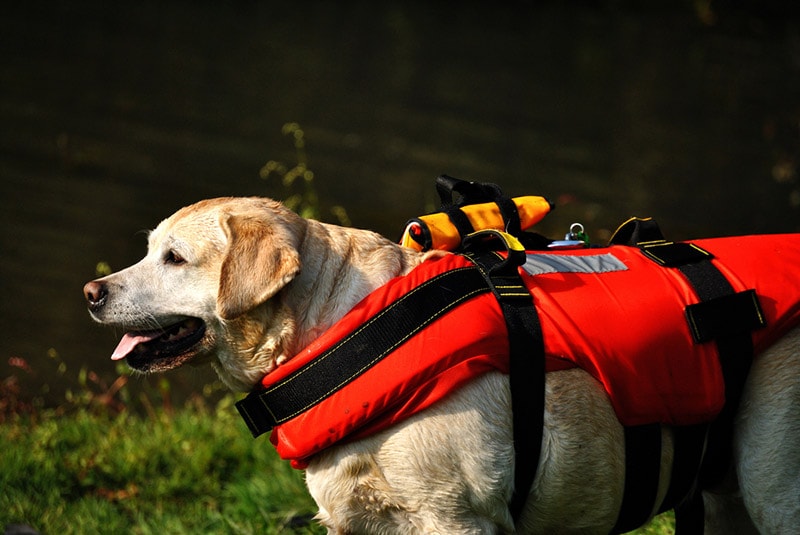
Water dogs undergo training to pick up scents in water. Skin cells and gasses rise to the water surface when a human body is underwater. This allows these canines to locate human beings submerged in water.
However, doing so is difficult in moving water bodies because of waves and water ripples. SAR teams use multiple water dogs and handlers to get around this issue. That way, they can pinpoint various alert points and use water current analysis to pinpoint the location of the body.
6. Avalanche Dogs
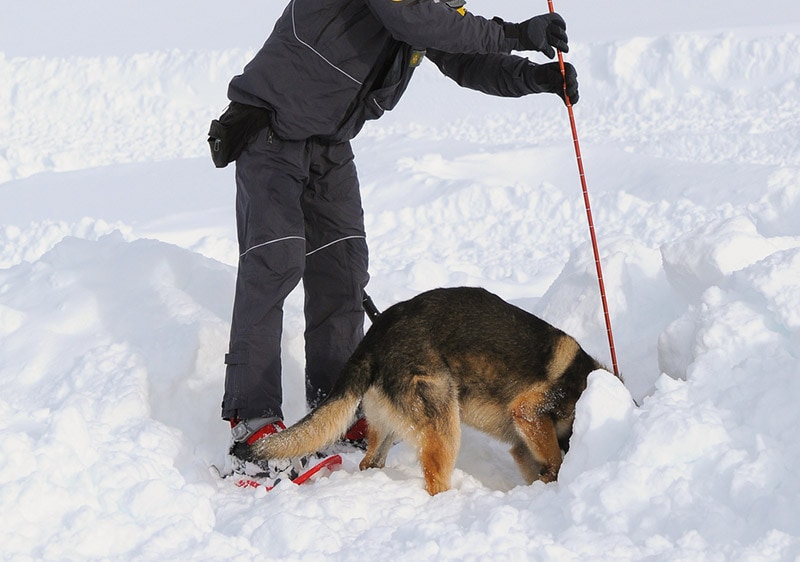
Avalanche dogs find survivors and human bodies after an avalanche. They also help locate missing people in snowscapes who might have fallen in a snow cave or got lost in the snow. These dogs look for human scent rising from beneath the snowy expanse. They must be agile to easily traverse the snow and be adaptable to hot and cold conditions.
Labrador and Golden Retrievers make the best avalanche dogs because of their incredible hunting drive and muscular build. They can easily identify survivors and dig up snow to uncover the buried body.
How Are Search and Rescue Dogs Trained?
Most search and rescue dogs start training at twelve weeks old. However, you can still enroll your dog for search and rescue training when fully mature. Training typically takes two to three years, with mandatory recertification every three years.
The first part of the training involves instilling SAR traits like obedience, discipline, and friendliness. Dog breeds that are naturally stubborn and aggressive are unsuitable for this training.
Once the trainers properly establish these traits in the pups, they proceed to the next phase of the training. This phase typically involves:
- Identifying human breath and scents
- Ignoring distractions during SAR missions
- Alerting handlers when they find a body
- Recalling the location where they found the body
Handlers also undergo their own training, which takes two to three years.
Closing Thoughts
Search and rescue dogs have saved countless lives over the years, helping SAR teams locate survivors and law enforcement solve multiple crimes. Unfortunately, the stress and tension of SAR operations sometimes take a toll on these precious pooches. It’s not uncommon for SAR dogs, especially cadaver dogs, to feel depressed. These dogs should be shown respect and love for all their hard work.
See Also:
Featured Image Credit: jasomtomo, Shutterstock




